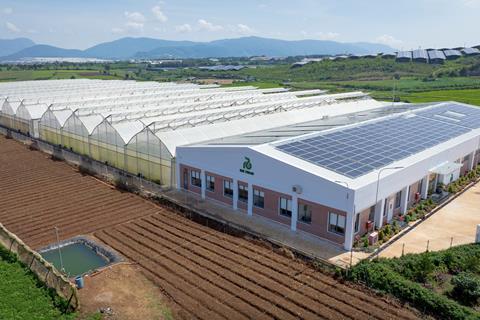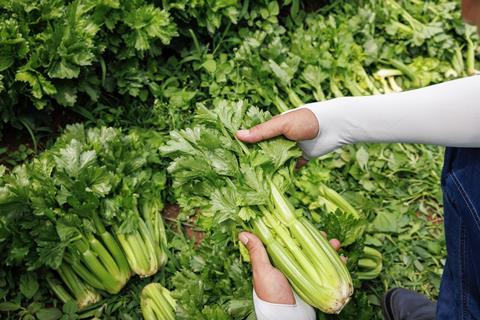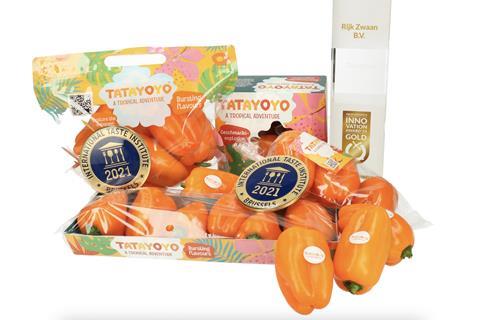The Dutch seed specialist is investing in new facilities across Asia while developing climate-resilient varieties and specialised concepts to meet growing demand in both established and growth markets

Ahead of Asia Fruit Logistica in Hong Kong, Fruitnet speaks exclusively with Rijk Zwaan’s Natalie Nguyen – client specialist Asia, Friso Klok – area manager/client manager, and Xinyuan Ma – client manager chain, based in China, about the company’s growing presence in Asia.
What are Rijk Zwaan’s most recent developments in Asia?
Natalie Nguyen: We are working on establishing a new commercial subsidiary in South Korea, a country in which our business has been developing positively in recent years. We do see significant potential in South Korea for us to invest. Therefore, having a strong commercial team there definitely will benefit us in the long term.
We officially had the opening of the R&D station in Dalat, Vietnam in September 2024, to further improve product development activities and enhance our tropical assortment for Southeast Asia – this will also serve as regional demonstration centre.
In Japan, a new 0.6ha high-tech greenhouse facility, focusing on tomato, lettuce, cucumber, and pepper, will have a dedicated compartment for R&D and demonstrations. With this significant investment, we hold ambitious expectations for the impact of this new greenhouse.
And in China, leveraging our vast consumer base and deep collaboration with partners, we’ve successfully introduced products with traditionally low regional acceptance, such as the mini celery Gimli, to targeted consumer segments. This breakthrough demonstrates the power of localised innovation in unlocking new demand.

How are your key products performing?
Xinyuan Ma: Rijk Zwaan has a wide range of products and services across different countries in Asia. Each market has its own growing conditions, growing methods and product preferences. However, our key concepts focus on innovative products that bring added value to all stakeholders in the fresh produce chain. That includes the sweet, pointed pepper Sweet Palermo, snack vegetables consisting of various options, diverse types of lettuce, cucumbers, tomatoes and high-quality Asian netted melons. These key concepts are available in most Asian countries where we are active, mainly China, India, Vietnam, Southeast Asia, Korea, Australia and New Zealand.
In addition, Rijk Zwaan has been deeply rooted in the Chinese market for many years, with many of its products performing excellently domestically, including hot peppers, sweet peppers, tomatoes, cucumbers, spinach, celery, and more. China’s sales channels cover wholesalers, large chain supermarkets, e-commerce platforms, and catering channels.
Are there any growth markets that are exciting you?
Friso Klok: Protected cultivation is developing throughout Southeast Asia with a yearly 5-10 per cent increase in acreage. We see potential in Indonesia and Philippines, and we expect Vietnam and Malaysia to develop further.
Key challenges we face in these growing markets are a lack of knowledge, a shortage of labour, pest and disease pressure, lack of category management at retail, less cooperation amongst growers, and an erratic climate
We do have several solutions for some of these problems. These include tech support and e-learning to increase knowledge, greater automation to make up for labour shortages, and improved varieties to mitigate the pressures of pests and disease.
Beyond traditional varieties, some newer products with distinct features, high quality and good taste are currently very popular in the Chinese market. In addition, the demand for a range of products driven by the trend of fruits and vegetables being ‘snackified’ has also attracted much attention. Rijk Zwaan has its own product series in this field and is currently promoting them to specific customers and markets.

What impact does the uncertain global economic and geopolitical climate have on a business like Rijk Zwaan?
FK: Asian countries are very resilient and adapt fast. Generally, they search for more value instead of cheap production. Also, the shift to self-reliance can be a threat to imports of genetic material.
The impact of the global economic situation and geopolitical climate affects everyone to some degree. As an international seed company, we strive to avoid potential risks to the greatest extent, focus on providing high-quality seeds to our customers, help them plant, process, and sell more effectively, and through joint efforts, deliver better products to consumers that meet market demands.
Global warming and climate change is having the biggest impact on year-round fresh produce supply for growers, meaning we need to develop better varieties and provide better services to make it successful. Our R&D department is working hard on developing varieties that have more resistance, which is crucial given the instability of weather. At the same time, we are trying to transform low- and mid-tech to high-tech cultivation by proactively exchanging knowledge and insights. We believe with the benefits of using the right technology, it will be a big advantage to develop sustainable production in the long-term.
This year, we are hosting a seminar covering the topic ‘VeggieTech – Technological Shifts in a Changing Climate’ at 11.30-12.30 on day one of the Asiafruit Knowledge Centre at Asia Fruit Logistica. By inviting key growers from different countries in Asia to share their learning and experience, we hope to give the audience better insight into this topic.
What are the key traits that your customers in Asia demand from your products?
XM: Rijk Zwaan is working with all partners in the fresh produce value chain – growers, plant breeders, processors, traders, retailers and consumers. Each of them is looking for very different traits.
Growers are seeking resistance to pests, diseases and viruses, they want high yields, better shelf-life, high food quality, better colouring and unique products. They can struggle to meet demand because of the above reasons, so they need support through partnerships and collaboration.
Processors are looking for the right product to be processed in terms of quality, volume and a stable supply from growers.
The traders we work with want products with excellent shelf-life, quality, and to partner with good suppliers and growers who offer a range of unique products. Retailers are also looking for a range of new products with longer shelf-life, and they also focus on better appearance, weight, size and convenience.
Finally, consumers demand high food safety standards, better taste, a wide range of options to choose from, convenience, high quality, better appearance, and more ways to consume those products.

What are your aims at Asia Fruit Logistica this year?
NN: Every year Rijk Zwaan has two main objectives at Asia Fruit Logistica. Firstly, to strengthen partnerships with our key clients in Asian countries who visit us every year in Hong Kong and connect stakeholders in the value chain based on their needs and requirements. And secondly, to introduce and promote our new products and developments that fit in with the Asian market.
We have a strong team with representatives from many Asian countries: China, Vietnam, India, Indonesia, Philippines South Korea, the Netherlands, Australia and New Zealand. We believe our team, with their expertise and connections, can bring a lot of values to our customers and visitors with the right advice and the right assortment during the fair.
Topics
- Asia
- Asia Fruit Logistica
- Asiafruit Congress
- Asiafruit Knowledge Centre
- Australia
- China
- Climate change
- Consumers
- Convenience
- Environment
- Europe
- Events
- Food waste
- India
- Indonesia
- Japan
- Korea, Republic
- Logistics & Cold chain
- Markets
- Netherlands
- New Zealand
- Oceania
- Peppers
- Philippines
- Production & Trade
- Research & Development
- Retail
- Salad vegetables
- Supply
- Sustainability
- Technology
- Tomatoes
- Vegetables
- Vietnam



